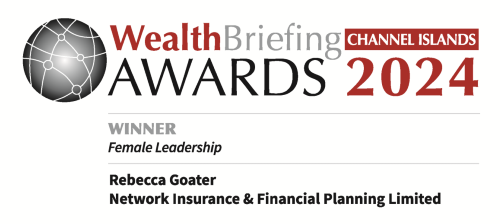
Insurance - How it Works
Insurance is a cornerstone of modern life. Without insurance, many aspects of today’s society and economy could not function. The insurance industry provides the cover for economic, climatic, technological, political, and demographic risks that enables individuals to go about their daily life and companies to operate, innovate and develop.
Despite this, the way insurance functions, and its value, are not always well understood. This article explains how insurance works, the value it provides, and the importance of the regulatory environment in maximising the benefits that insurance can offer.
How Insurance Works – the basics
Insurance is the transfer of risk. It transfers the risk of financial losses as a result of specified but unpredictable events from an individual or entity to an insurer in return for a fee or premium. If a specified event occurs, the individual or entity can claim compensation or a service from the insurer.
Insurance is therefore a means of reducing uncertainty. In return for buying an insurance policy for a smaller, known premium, the possibility of a larger loss is removed. By pooling premiums and insured events, the financial impact of an event that could be disastrous for one policyholder is spread among a wider group.
So risk pooling is the key?
Essentially, yes. Pooling spreads the cost of losses between a number of policyholders. Take household contents insurance against fire, for example. When the risk of a fire is pooled, the large cost to the few who suffer from a fire is spread between all members of the pool. The average cost to members of the pool (the premium) is relatively low, as only a small number of them is likely to suffer a loss.
The price of the insurance should be such that the individual is prepared to pay the smaller, known premium in return for not having to pay the unknown — and potentially very large — financial cost of the insured event. Each policyholder should pay a fair premium according to the risk of loss that they bring to the pool.
How is a fair premium calculated?
As long as there is sufficient experience or knowledge of past events, insurers can use the resulting statistics to make sophisticated calculations. This process — called underwriting — involves calculating the probability of the risk for each insured or category of insureds. Based on the principle of large numbers, the larger the pool of policyholders, the more accurately the probability of the risk can be calculated. The premiums charged are based on these calculations. Inevitably there will be variations in claims costs at different times, so the premium will also include a margin to enable the insurer to build up a reserve to draw on in bad years.
Unique and rare risks — injury to a professional footballer’s legs, for example — can sometimes also be insured, but the premiums will be comparatively high.
Insurance protects people and businesses against the risk of unforeseeable events. It is a risk transfer mechanism by which the losses of the few are paid for by the many, with the premiums based on the risk of each individual or entity.
Modern insurance — although based on a very simple principle — is an extremely sophisticated risk-transfer mechanism that comes in many forms.
Insurance has developed over many centuries. It started with crude marine insurance by which merchants agreed to make contributions to those who had suffered a loss after it had taken place. The problem with this system was that it did not fully transfer the uncertainty; the merchants never knew how much they might have to pay. Modern insurance has, therefore, developed so that policyholders know upfront the full extent of their required share of losses (ie their premium).
The value of this certainty to individuals, society and the economy is huge. Indeed, it is fair to say that modern society could not function without insurance. Many daily activities that we take for granted involve some risk of loss and might not be performed were it not for insurance.
In general, a large number of similar risks are required for insurance to be economic. Insurance for unique risks is nevertheless possible, but it can be prohibitively expensive. There are certain prerequisites that have to be fulfilled for something to be insurable and regulation has a crucial role to play here.
How do insurers assess a risk?
The process by which the risk of the policyholder is assessed is called underwriting. The premium and terms of the insurance contract are based on the insurer’s assessment of the level of the risk.
Each individual or entity wishing to be insured brings a different level of risk to the insurer; a timber house is at greater risk of fire than one made of brick, for example. To make sure that each insured pays a fair premium, insurers use a series of rating factors to assign the level of risk. In general, the higher the risk, the higher the premium.
The underwriting process will differ from insurer to insurer, depending — for example — on the level of risk they are prepared to accept. Terms and conditions may be applied to policies to further homogenise the risks by removing particular events or circumstances under which claims would be paid. Terms and conditions are also important to help reduce the impacts of moral hazard and adverse selection.
Risk assessment is economically efficient, as it allows the price of the insurance to reflect the cost of providing it. While underwriting must be consistent with the law, any restriction of the freedom of insurers to underwrite and price according to the risks they are accepting will most likely lead to higher insurance prices and therefore lower availability, affordability, and choice for consumers. The role of regulation here is explained in more detail later.
Does risk-based pricing have any other advantages?
Yes, risk-based pricing encourages insurers to innovate so that they can compete more effectively both on price and on products. Developing new, or more sophisticated, rating factors can enable insurers to offer more competitive rates, or to offer insurance for risks that were previously uninsurable. As insurers learn more about the diagnosis and treatment of certain illnesses, for example, cover can be offered for diseases that were previously uninsurable. Likewise, better modelling of flood risk can make previously uninsurable homes insurable. Risk-based pricing can also influence positively the behaviour of individuals.
The underwriting process benefits policyholders. The more information held about an individual risk, the more the premium can be tailored to that risk. If the insurer’s freedom to underwrite and price is restricted, either the pricing and availability of the policies or the insurer’s profitability is affected.
So what is moral hazard?
Moral hazard is the risk that the behaviour of policyholders changes once they have entered into an insurance contract in a way that makes the risk event more likely to happen. For example, a car owner may drive less carefully once they have insurance that passes the risk of the car being damaged on to an insurer.
Moral hazard can result in more claims than the insurance company expected based on its underwriting, and could result in premiums increasing for all policyholders if it is not managed effectively. This is why it is important for the terms and conditions of insurance contracts to be worded correctly.
And what does adverse selection mean?
Adverse selection is a situation in which higher risk individuals are more likely to take out insurance. One of the objectives of underwriting is to avoid this by identifying relevant risk factors and setting premiums to correctly reflect the risks.
For example, if smokers and non-smokers are offered life insurance at the same price (based on the average life expectancy for both groups), the premium will be better value for smokers — who can be expected to have a higher than average mortality rate — than for non-smokers. As a result, more smokers than non-smokers are likely to take out the insurance. The insurer will then end up with a higher than average mortality rate (and hence higher claims) than it anticipated when it was pricing the product, which will affect its reserves or the premiums it then charges. However, by taking smoking into account as a rating factor in the underwriting process, insurers can offer lower life insurance premiums for non-smokers than smokers.
And finally, what is reinsurance?
Put simply, reinsurance is insurance for insurers.
Similar to insurance, reinsurance reduces an insurer’s risk of loss by sharing the risk with one or more reinsurers. Reinsurance generally works by either transferring a portion of a particularly large risk that has been taken on by an insurance company (facultative reinsurance), or by transferring a portion of all the pool (or book) of risks (treaty reinsurance) to a reinsurer in return for a share of the original premium. In the event of a claim, the reinsurer compensates the insurer for its share of the risk.
The financial compensation that would be required in the event of a commercial airline plane crash, for example, could be too great for a single insurer, so reinsurance is sought to share the loss. Alternatively, a certain level of the risk from, say, an insurer’s motor or life insurance business could be transferred to a reinsurer.
Underinsurance: The hidden risk facing homeowners
It’s estimated that more than half of home insurance policyholders are underinsured — a hidden risk that could result in serious financial loss if disaster strikes.
Financial advisers: the GPs of your financial health
Director and financial adviser, Bex Goater, explains why you should treat your finances like your health.
Top 10 insurance myths - busted by a broker
Insurance can be complex, and when it's misunderstood, the consequences can be significant. Here, Network's managing director, Ollie Goater, gets to the bottom of all things insurance.
Why long-term investing still matters — even when cash looks attractive
Bex Goater, director and financial adviser at Network Insurance and Financial Planning, looks back over the last five years, in particular at how world events have shaped the investment markets.
We’d love to stay in touch and keep you up to date with the very best insurance and financial planning advice

